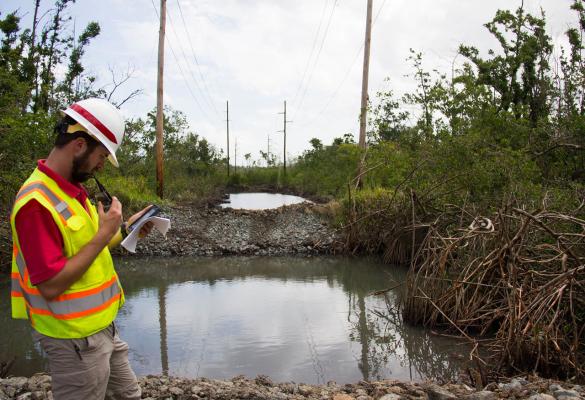Mangrove Restoration
Mangrove ecosystems are a form of coastal wetlands found in tropical and subtropical regions. These systems support halophytic (salt-loving) trees, shrubs, and other plants, and are dominated by mangrove trees. In the continental United States there are three mangrove tree species: red mangrove (Rhizophora mangle), which grows along the shoreline where conditions are harshest and is easily recognized by its arching prop roots; black mangrove (Avicennia sp.), which often grows more inland and at higher elevation than red mangrove and has root projections called pneumatophores to supply the plant with air in submerged soils; and White Mangroves (Laguncularia racemosa), which often grow inland with no outstanding root structures. (EPA 2022; Shepard et al. 2022). Restoring degraded or destroyed mangrove systems typically involves restoring natural hydrology and, in some cases, planting mangrove trees.

Case Studies
Mangrove Restoration at West Lake (Broward County)
Matheson Hammock Tidal Creek Restoration (Biscayne Bay)
San Juan Bay Estuary Program Assesses Vulnerability & Targets Adaptation Measures
Likely Benefits and Outcomes
This strategy is likely to achieve these project goals. Click to search for strategies with a similar benefit.
Related Green (natured-based) vs. Gray infrastructure
Explore opportunities to replace or supplement gray infrastructure with green infrastructure options.
